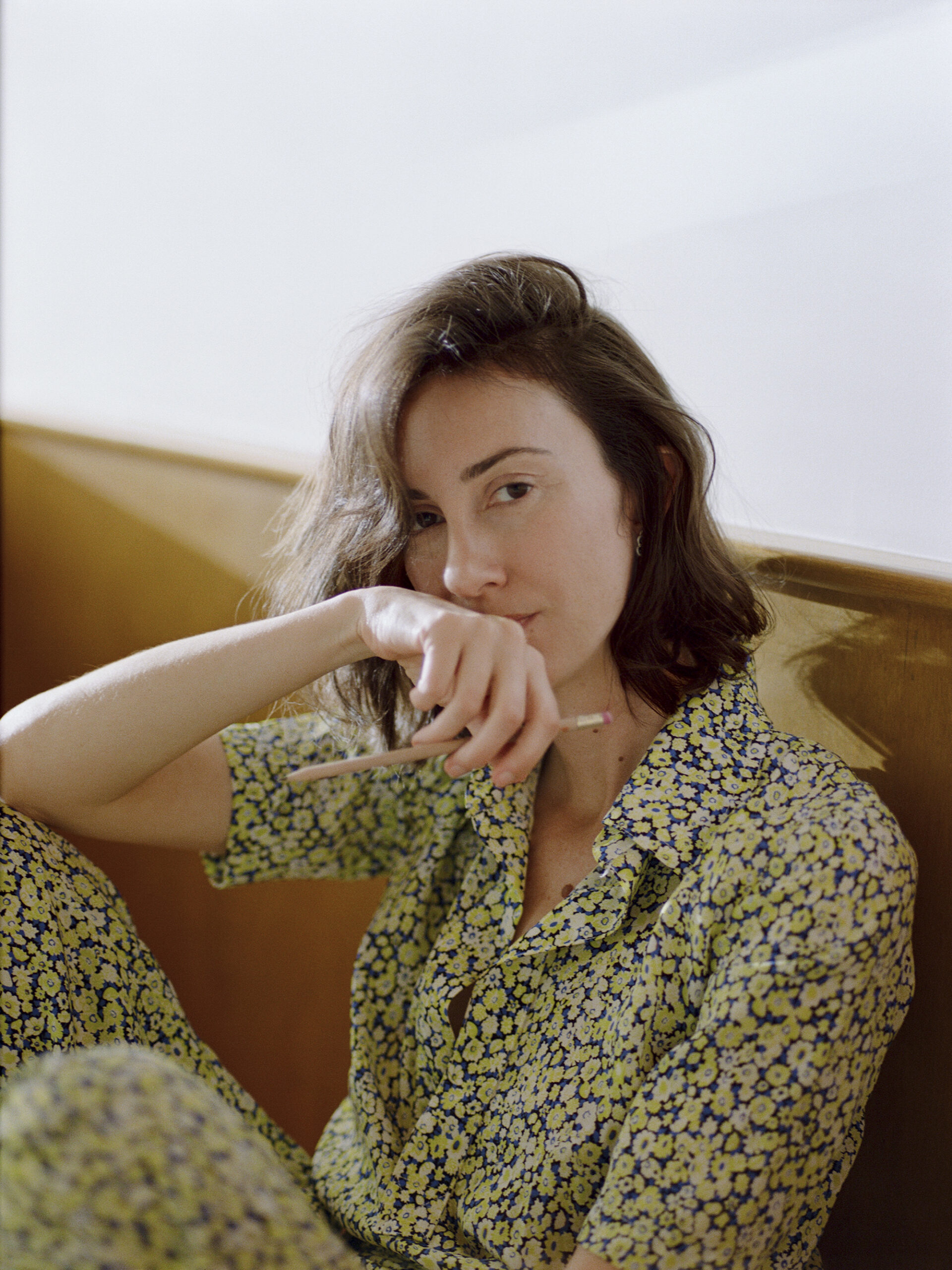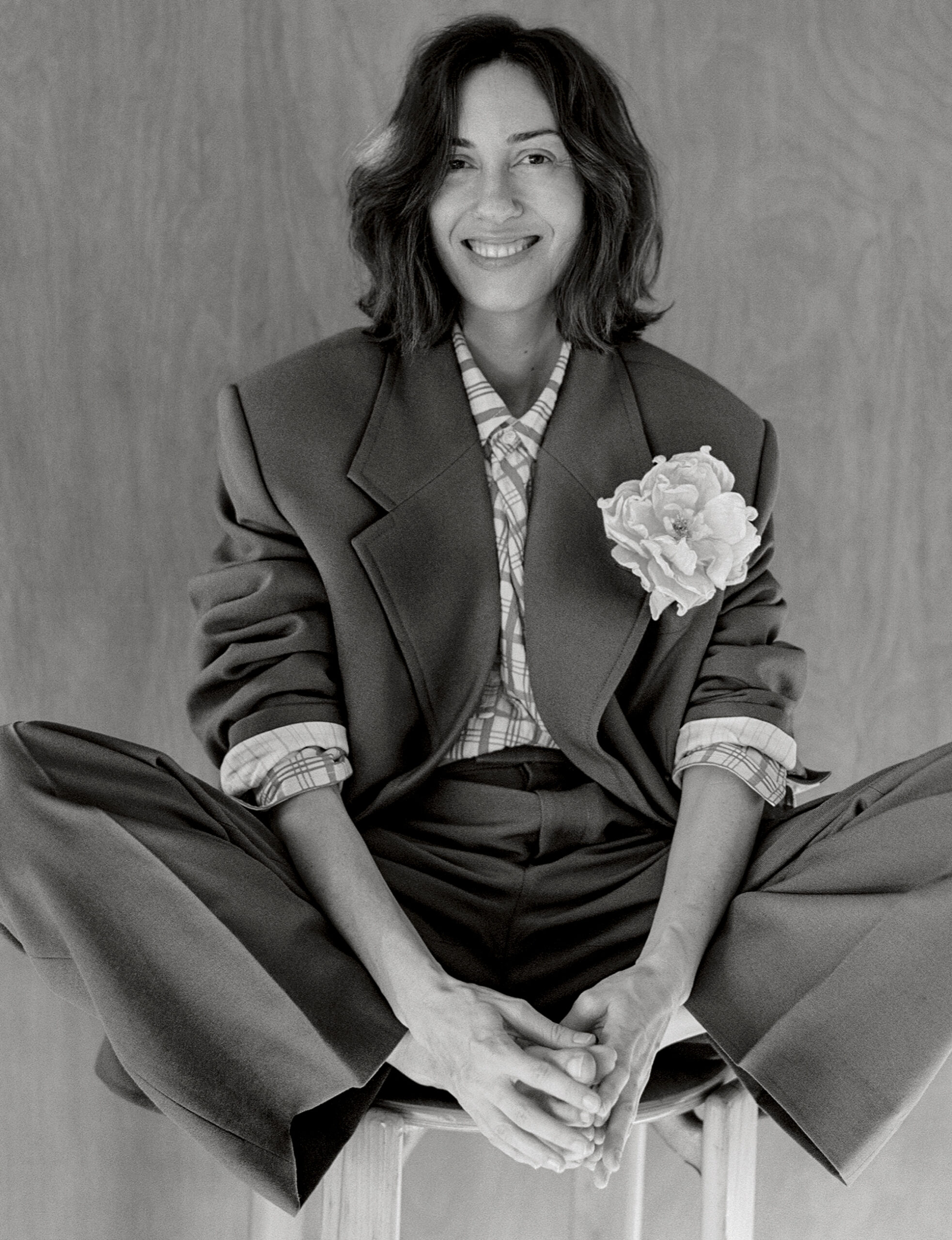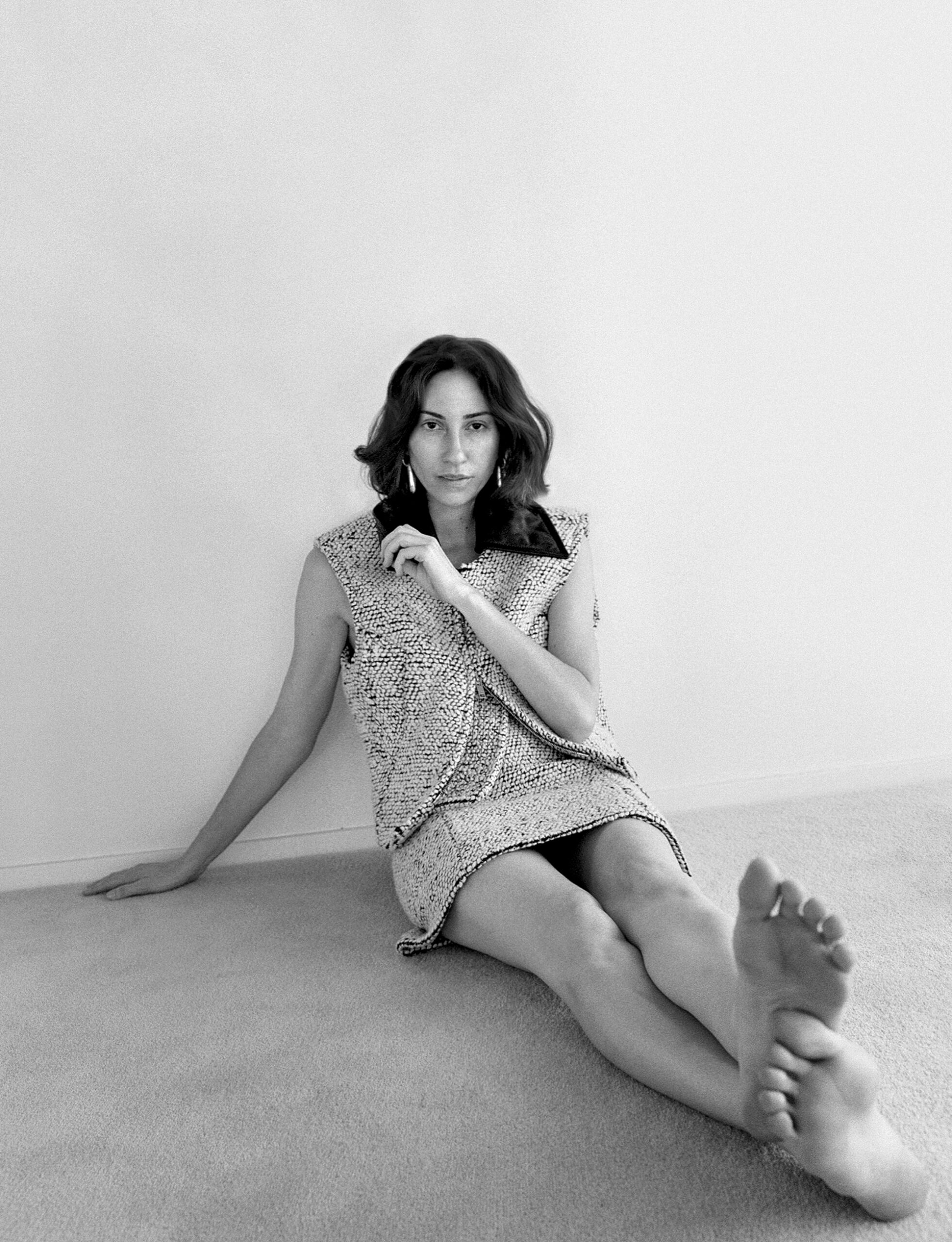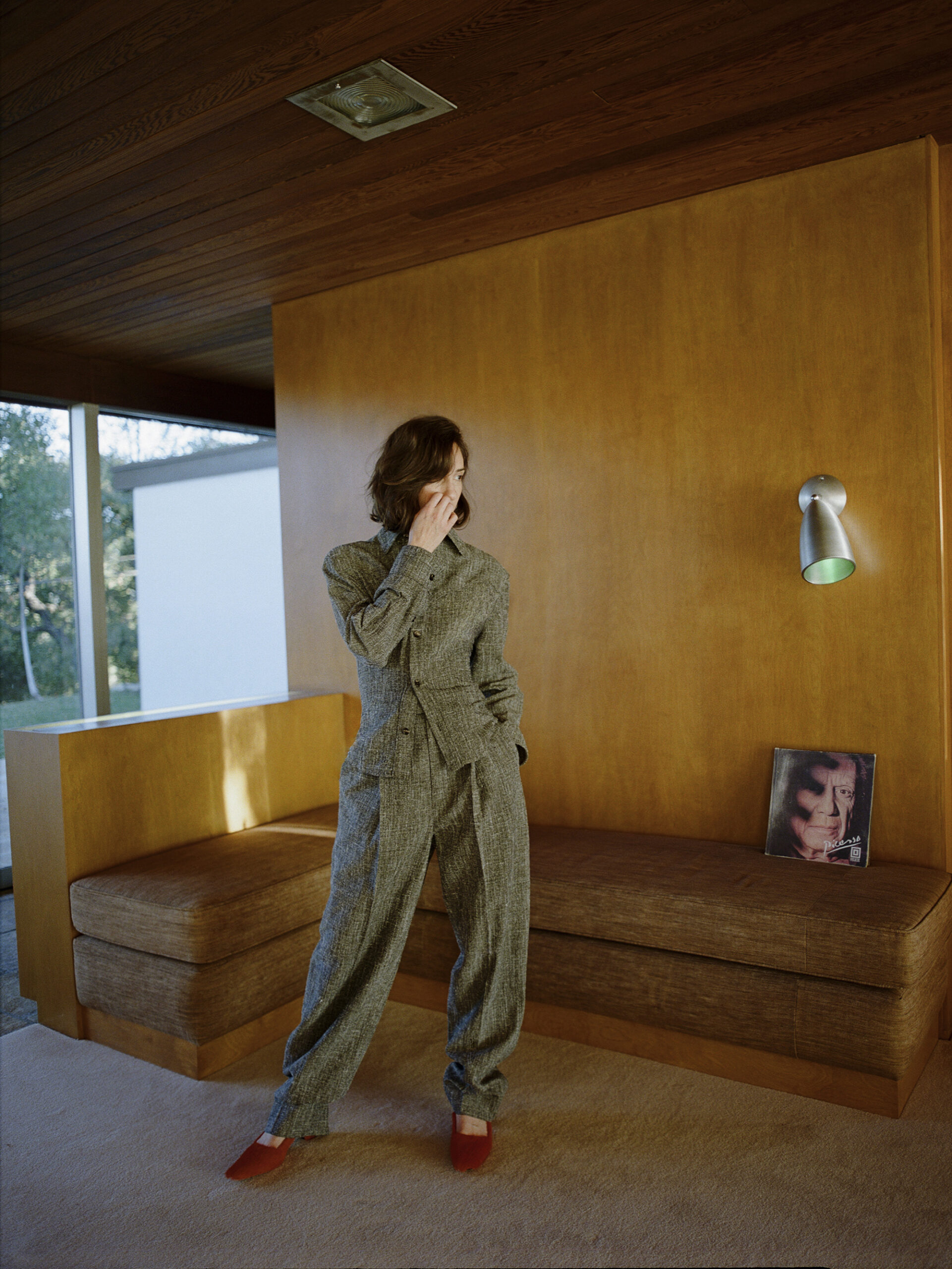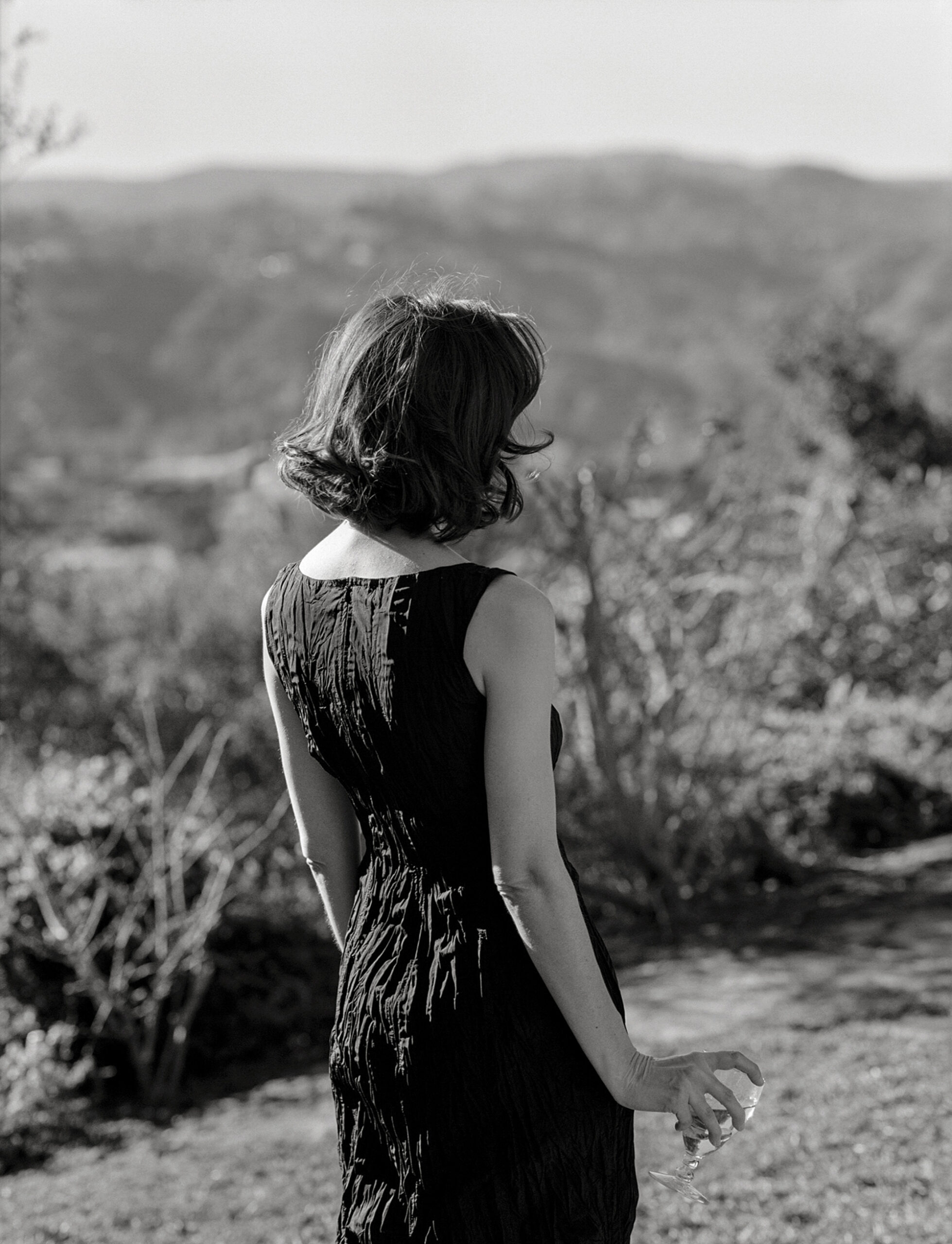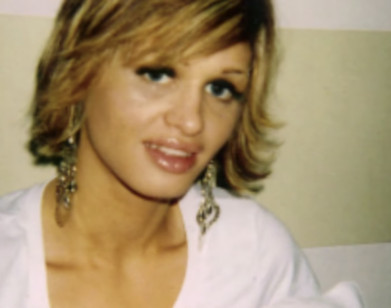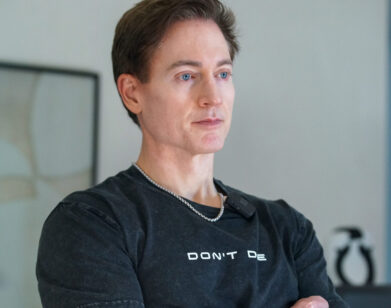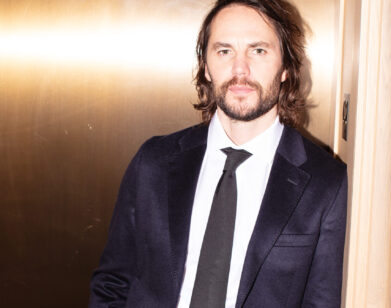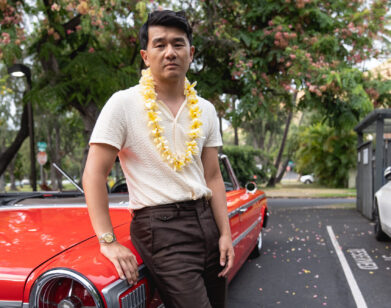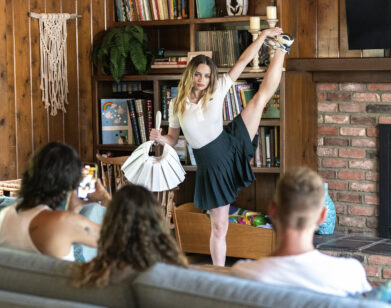DIRECTOR
“I Couldn’t Take No For an Answer”: How Gia Coppola Got Pamela Anderson to Star in The Last Showgirl
After the director Gia Coppola watched Pamela Anderson’s Netflix documentary, it became abundantly clear who should star in The Last Showgirl, the story of 57-year-old Shelly Gardner, a seasoned Las Vegas dancer grappling with her past and future amidst the closure of Le Razzle Dazzle, the classic French-style revue she’s starred in for three decades. But when Coppola sent the script, written by Kate Gersten, to Anderson’s management, she was swiftly turned down. “I couldn’t take no for an answer,” Coppola told Dave Bautista, who plays Eddie, the revue’s producer. So she got in touch with Anderson’s son, who made sure to get the pitch to his mom. Now, days after the film opened wide in the United States, Anderson is reeling in accolades and nominations from the Hollywood Foreign Press Association and the Screen Actors Guild. Below, Coppola and Bautista discuss her nuanced and heart-rending performance, working with their secret weapon Jamie Lee Curtis, and bringing the pageantry of Las Vegas to life on screen.
———
GIA COPPOLA: Hey.
DAVE BAUTISTA: What’s going on here? I only see half of your face.
COPPOLA: Only half?
BAUTISTA: All right, hang on. How are you? There you are.
COPPOLA: I’m good.
BAUTISTA: Congratulations on everything. This is crazy.
COPPOLA: It’s been a whirlwind, but it’s great for the film.
BAUTISTA: And you, and everyone.
COPPOLA: Yeah.
BAUTISTA: Are you excited? Are you nervous?
COPPOLA: It’s been exciting. It’s been fun hanging out with Pamela [Anderson] a lot, and fun to be alongside that journey for her. They did a screening for everyone in Vegas and the locals and the dancers were super pleased. I feel like we did our job by being authentic to that community.
BAUTISTA: We watched the film in New Zealand.
COPPOLA: Wow.
BAUTISTA: We didn’t have the best screener, which is really disappointing. We had technical issues.
COPPOLA: Oh, no.
BAUTISTA: So I haven’t really seen it yet.
COPPOLA: It just kept getting interrupted?
BAUTISTA: And the quality was really bad. It was really dark. But still, people were really emotional about the film. Anyway, I know you’re short on time, so I don’t want to ramble on because I will.
COPPOLA: It’s so nice to see you.
BAUTISTA: I have a million and one questions about you as a person and director. But I will focus on this. My ADD may kick in a little bit.
COPPOLA: Same here.
BAUTISTA: We had a conversation early on and when you told me Pamela was going to play Shelly, I flipped out. I was like, “I couldn’t imagine anybody else playing the part.” Tell me how that happened.
COPPOLA: I crave to make something intimately. To do that, I was talking to my family. During the summer we would all do one act plays and be creative together. So it made sense to take on this venture in the same way. Kate [Gersten’s] script was a play first, which allowed us to keep this story contained. With Pamela, no one really could come to mind for her character. I had seen a picture of [Pamela] on Instagram because she was promoting her documentary, and I had thought, “She would be intriguing,” but I really knew nothing of her as an actress. But after watching her documentary, you see she’s so full of art and creativity. She’s so knowledgeable about arthouse cinema and poetry. She’s a beautiful writer and a person that had a lot of vulnerability and similarities to Shelly. She was itching to express herself in a different way that would make it exciting to work with her. I didn’t know her at all, so I went to her agent at the time but got turned down within an hour. A record time of rejection.
BAUTISTA: Really?
COPPOLA: But I couldn’t take no for an answer. I saw that her son was an executive producer on the documentary. I asked anyone if they knew Brandon and I finally found someone. We went to dinner and I talked to him about the project. Then he was like, “Good news. She read the script, she loves it, she’d love to talk to you.” When we talked, she was selling herself to me and I was like, “No, no. I want you to do this project. I’m trying to sell myself to you.” It cut all the fat and we were able to execute straight into the project.
BAUTISTA: I didn’t know that her representation turned down the role.
COPPOLA: Yeah.
BAUTISTA: I’m shocked. Are they still her representation?
COPPOLA: No. I told her after we made the movie. It’s a small movie, and we’re not paying big bucks, so I guess it wasn’t enticing to the reps.
BAUTISTA: I feel like I just got stabbed in the heart because that’s been my battle. It would’ve killed me if I had known that this role had come my way and somebody turned it down. I don’t want to make this about me, but I can relate to Pam in the way that people wouldn’t typically think of her if they knew anything about her before the documentary. I did watch it because you suggested it, and I was blown away. I didn’t know much about Pam, but I immediately wanted to root for her.
COPPOLA: Yeah.
BAUTISTA: I was so proud to be able to support her. I knew this was a massive comeback. It’s hard for people to look past my wrestling career and my physical stature and take a chance on me. I imagine it had to be the same for Pam. Out of pure curiosity on my end, I just wonder what’s so different about you that you could see past it and see the artistry in us?
COPPOLA: Was it over seven years ago when we talked, and you expressed that you were interested in more dramatic roles? My casting process is just getting to know actors as people, and what their interests and desires are. So often, I see that they want to play roles that they haven’t expressed before. As a director, it’s fun to give actors opportunities that they’re excited by, because that generates great art. It always stayed with me that you had that desire. Then when I saw this part, I thought of you instantly. You took the character and brought so much heart and empathy. My process is like, “This is your craft. You guys are the genius at it. I’ll just put the pieces together and then let it flourish.”
BAUTISTA: I don’t want to leave this conversation without asking about Jamie Lee Curtis. She’s like Hollywood royalty, but this is new for her. I’ve never seen her in this type of character. She seemed really passionate about it.
COPPOLA: I really didn’t think I had a chance with her. She’d just won the Academy Award. I was like, “Why is she going to want to do a small movie?”
BAUTISTA: For her to be willing to step in, take this role and just absolutely crush it, that says a lot.
COPPOLA: Exactly. She’s such a supporter of independent movies and arthouse film. You saw, she was on set the whole time. If she had to move gear, she would do it. Whatever we had to do to get the story in the can, so to speak. I learned so much just being in her presence. Same with you—you all had ideas about what your character should look like. I remember with the wig and the hair, I was like, “I’m not sure.” Then you did it and I saw it and was like, “You were right. That’s a great idea.” And with Jamie, too. She was like, “I think my hair should be like this.” I was like, “Yeah, go for it.” The fun part is collaborating with all you guys, sharing ideas and trying different things. But to touch that level of experience was really educating, too.
BAUTISTA: All right, I’m going to read a written question here because I think it’s interesting. It says, “The showgirl archetype is iconic, yet often stereotyped. How did you dismantle or reframe those assumptions in your portrayal of Shelly in her world?”
COPPOLA: Ooh.
BAUTISTA: That’s right. These questions are way smarter than me.
COPPOLA: That’s a doozy. I didn’t know much about the showgirl world. I knew the Verhoeven film [Showgirls], which was more of a modern take. To dive into that world was interesting—the level of production, art, and care that went into those shows. We saw the original space, and some of the sets are still in the building because they’re so massive. They can’t get them out and they have to be demolished. And you saw those costumes—they’re like museum pieces. They’re intricate and heavy. They haven’t left the building in 30 years. Getting to talk to other showgirls and understand their love and appreciation for what they do was really interesting. It’s much more intricate than just being topless and walking around in these costumes.
BAUTISTA: People go to Vegas and they see the glitz and glamour. They don’t see how the people who are providing that fantasy vacation really struggle, get wrapped up, get sucked up and a lot of times are chewed up and spit out. How did you avoid Shelly’s character being pitied, instead of embraced and strong?
COPPOLA: Reading it, you don’t want to just see someone that’s… I don’t know. You have to find the range and the root of who humans are. You could see that her coping mechanism was to be in her fantasy. What’s so interesting about this whole piece was all these different generations of women coming to this crossroads in different ways because of where they’re at in their lives. Just piecing the root cause of how you approach any situation as a human, but also because of the casting of Pamela. She is a really strong woman, but in her feminine way. Which I think, again, it does all that nuance for you.
BAUTISTA: I really felt the female empowerment message. It is going to translate to anybody who’s been in pursuit of a dream. Anybody in the entertainment industry would really relate to this. I have to thank you personally for this message, it’s very powerful and it resonates with me.
COPPOLA: I felt like it was important to relay what I think is being phased out of your dream just because of certain societal norms, and economic struggle. I’ve always had a love and appreciation for Vegas. I would go there during college. I would drive my car back cross-country and always stop in Vegas, because I was a photo major, and take pictures. I remember once my friend got pickpocketed and we had to report it to the police and it led us down the back channels or canals of the casino. I saw, “Employee of the month.” And that always stayed with me, “Oh, who are the people that make this illusion come to life?” So much of it is consumer space, but there’s actual people that have talents and dreams behind this glittery facade. And so a lot of my research and inspiration was really photography, journalism, documentary, and just observing the lives of these real people, because it’s such an unusual city. I mean, there’s nothing like it.
BAUTISTA: You really did a great job in capturing that classic Vegas.
COPPOLA: I’d love to go back in time and witness that Vegas in the Rat Pack era.
BAUTISTA: I love it.
COPPOLA: It makes me so happy to get to see you and talk to you. I hope our paths cross again somewhat soon. If not, we’ll just have to make something in order to hang out again.
BAUTISTA: Please do that. You know I want to work with you again. Please keep me in your Rolodex and call me whenever you have something.
COPPOLA: I’d love that. So good to see you, Dave.
———
Hair: Cherilyn Farris at Highlight Artists.
Makeup: John McKay using Hourglass & Charlotte Tilbury at Frank Reps.
Nails: Shigeko Taylor using The GelBottle at Star Touch Agency.
Photography Assistant: Ben Schmikler.
Fashion Assistant: Chantz Norrishi.
Production Coordinator: Emma Soviero.
Location: Schaarman House by Richard Neutra.
Special Thanks: Wicks Walker, owner of the Schaarman House by Richard Neutra.


